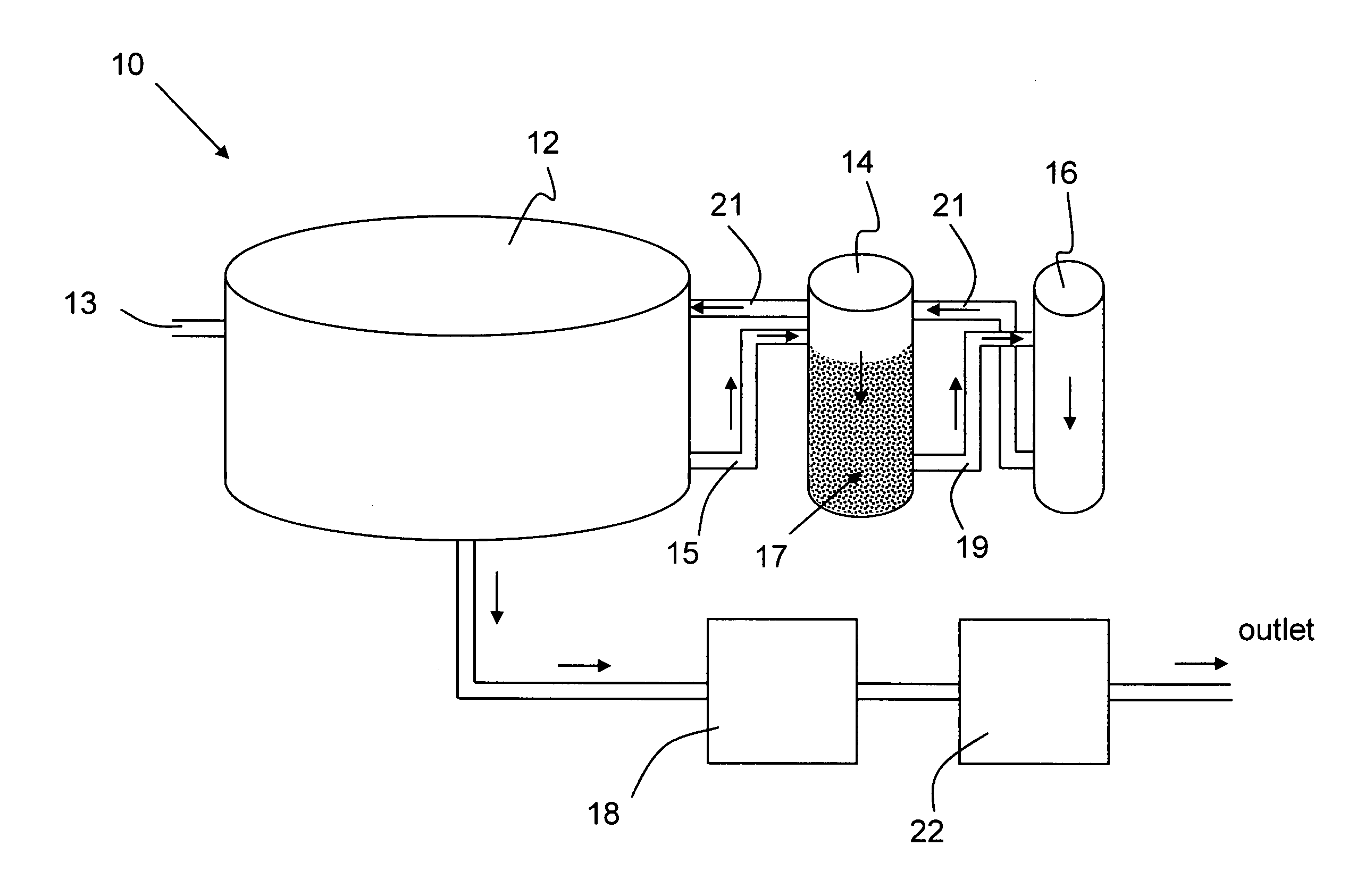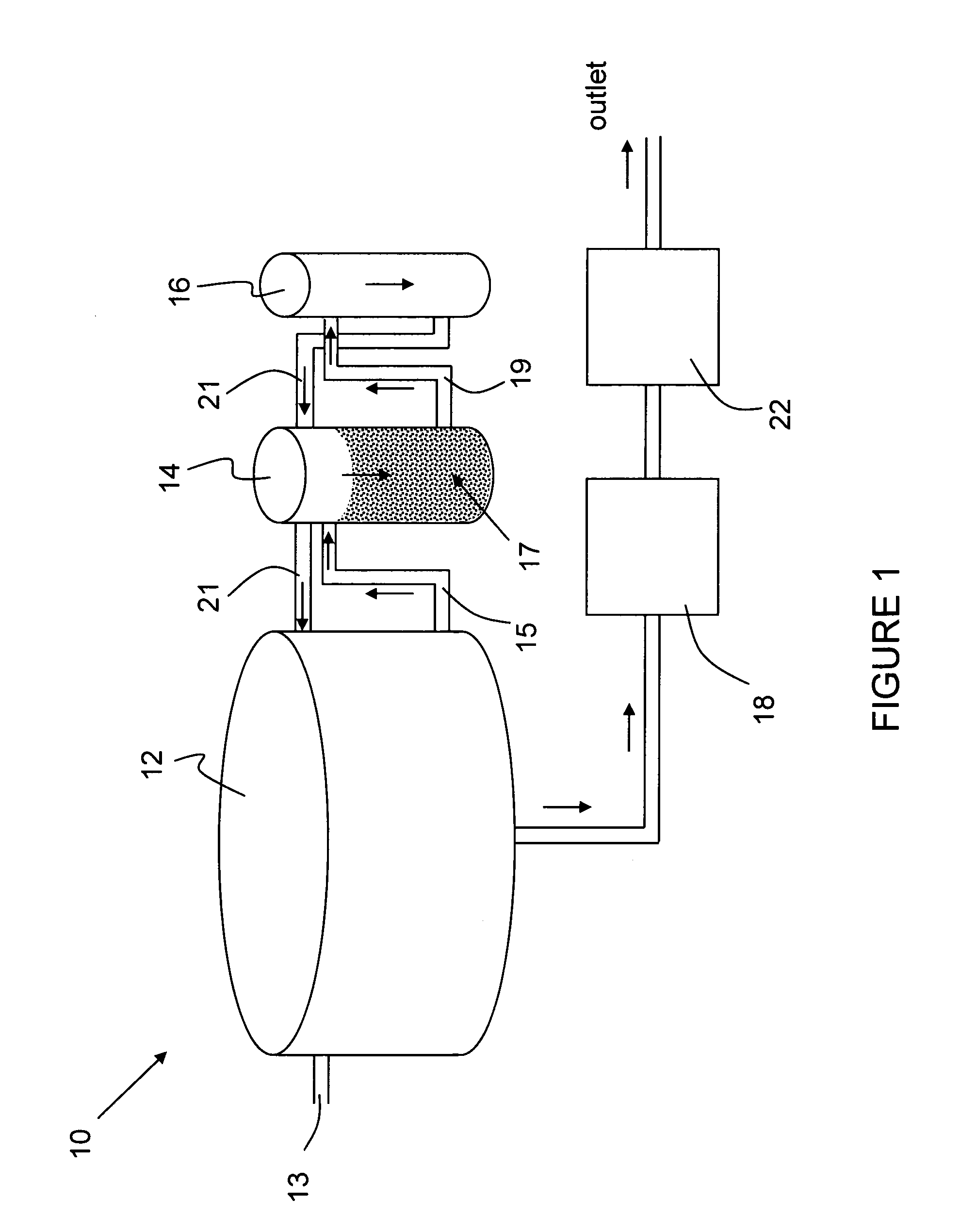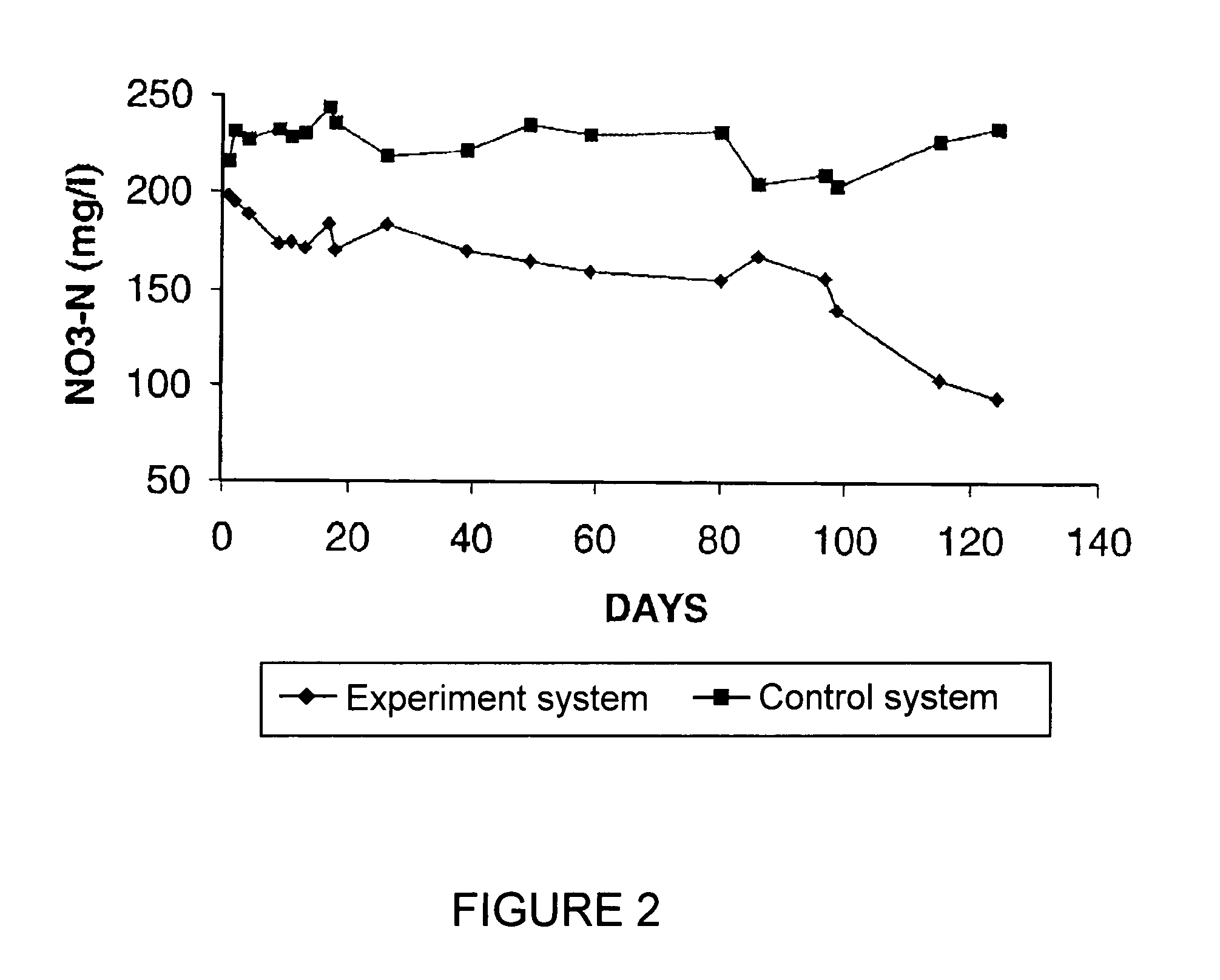Aquaculture nitrogen waste removal
a technology of nitrogen waste and aquaculture, applied in the field of aquaculture, can solve the problems of high nitrate effluent discharge, high cost, and complex discharge permits
- Summary
- Abstract
- Description
- Claims
- Application Information
AI Technical Summary
Problems solved by technology
Method used
Image
Examples
example 1
Nitrification and Denitrification in a Recirculating Aquaculture System
[0053]A 5-m3 circular fiberglass tank containing gilthead seabream, Sparus aurata, was operated at a density of 80 kg / m3 and feeding rate of 6 kg / day. The tank was connected to a 2-m3 moving bed bioreactor filled with 1 m3 of polyethylene beads having a specific surface area of 500 m2 / m3 (4.86 cm2 / bead) (Water Management Technologies, Baton Rouge, La., USA). A flow rate of 10 m3 / h was set to enable two exchanges of water per hour through the filter. After four months of operation, 3000 beads from this high organic load MBB were transferred to a small experimental salt water system having a filter volume of 5 liter and tank volume of 150 liter. For nitrification activity, incubations were performed in a moving bed bioreactor of the present invention under aerobic conditions with the addition of 3 mg NH3—N / L.
[0054]An anaerobic denitrifying moving bed bioreactor was directly attached to the aerobic biofilter reactor...
example 2
[0056]The two-stage biofiltration system comprising a aerobic biofilter reactor and an anaerobic biofilter reactor was used with two 4000 L tanks in which seabream were grown at 40–50 kg / m3 and fed daily at 1% of their body weight. During a four-month experimental period, daily water exchanges were obtained that averaged as low as approx. 1% of the tank volume. This water exchange was significantly lower than the 7% to 10% generally required by the system and this reduction in water exchange reduces the costs associated with salt from as high as 25% to as little as 3% of the total production cost, thereby considerably enhancing the profitability of such systems. Variations from the above described conditions are possible and can be varied by one of ordinary skill in the art. The examples provided are for illustration of the instant invention and are not intended to limit the scope of the disclosed invention
PUM
| Property | Measurement | Unit |
|---|---|---|
| diameter | aaaaa | aaaaa |
| concentration | aaaaa | aaaaa |
| thickness | aaaaa | aaaaa |
Abstract
Description
Claims
Application Information
 Login to View More
Login to View More - R&D
- Intellectual Property
- Life Sciences
- Materials
- Tech Scout
- Unparalleled Data Quality
- Higher Quality Content
- 60% Fewer Hallucinations
Browse by: Latest US Patents, China's latest patents, Technical Efficacy Thesaurus, Application Domain, Technology Topic, Popular Technical Reports.
© 2025 PatSnap. All rights reserved.Legal|Privacy policy|Modern Slavery Act Transparency Statement|Sitemap|About US| Contact US: help@patsnap.com



